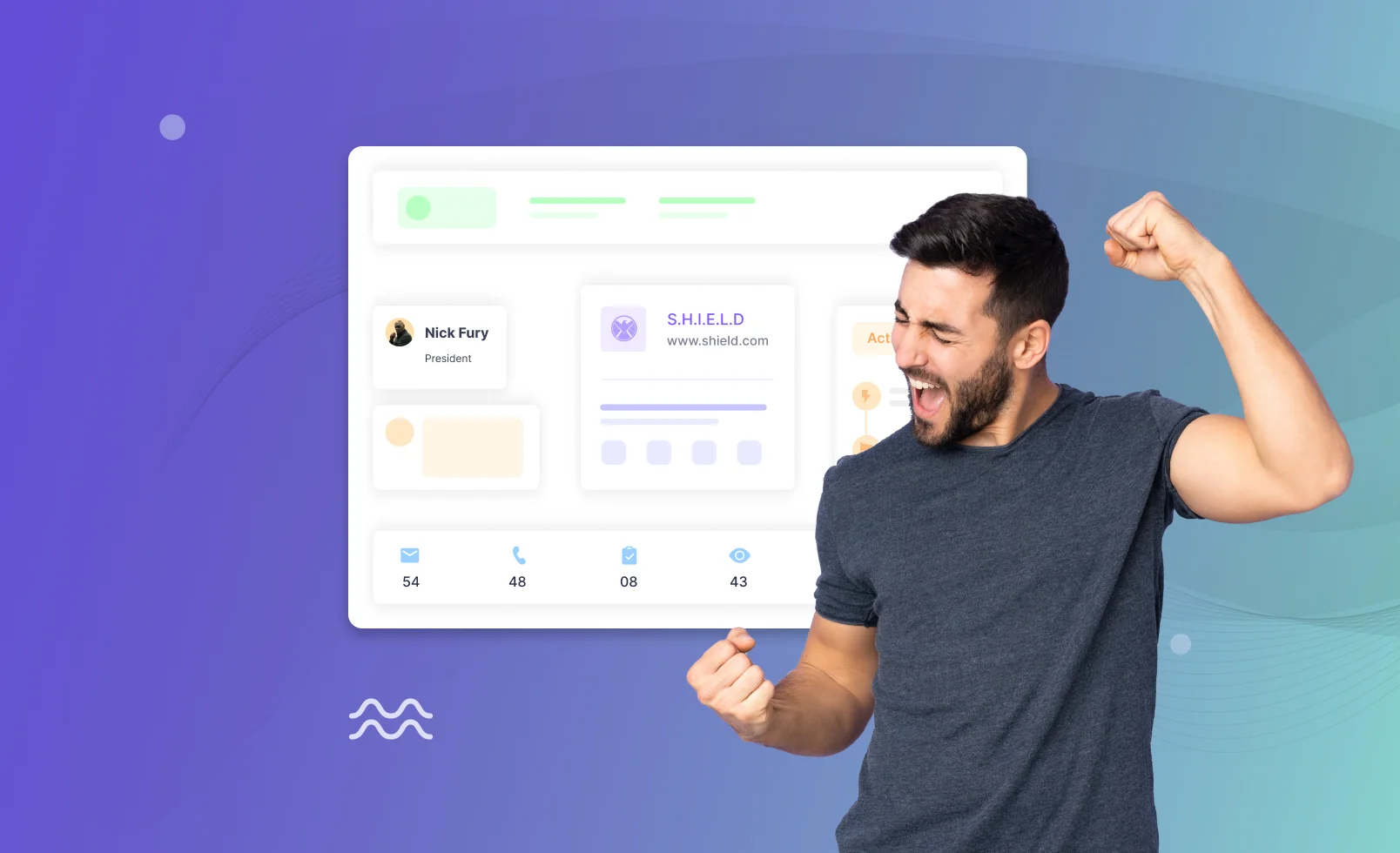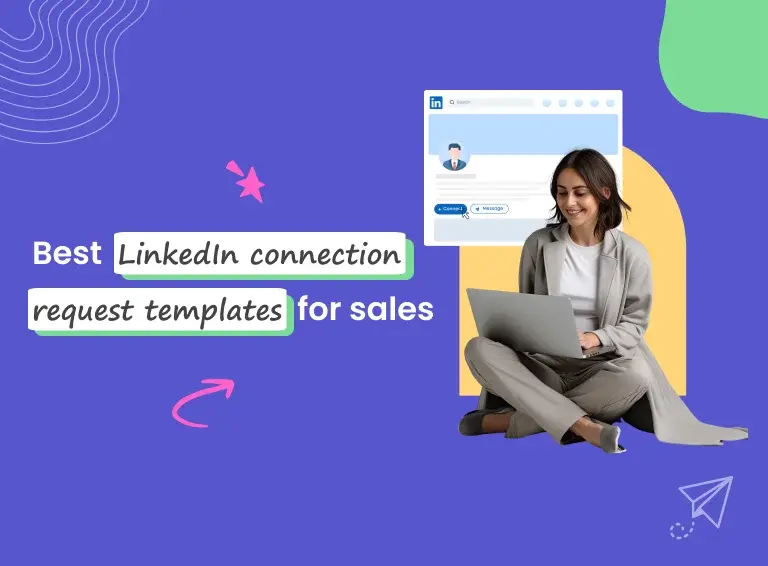For sales teams looking to change the outreach game by adopting a strategy of reaching out to multiple stakeholders in a company, an Account-based Selling playbook is what you’re looking for.
This means - the GTM team sits together to decide the market fit, addressable market, Ideal Customer Profiles (ICPs), and messaging to carefully determine the correct accounts to pursue.
Then comes the most challenging part of the selling process - executing the Account-based Selling approach.
Account-based selling is challenging because sales reps will not focus on a single individual prospect in an account. Instead, they engage with multiple stakeholders within an account simultaneously with tailored messaging for individual roles.
This means that the sales reps need to:
a) Create accounts and group all prospects by companies
b) Send personalized messages based on different roles at scale
c) Get insights into the performance of each account
d) Sync all account-level data back to the CRM
Imagine the amount of work a single sales rep needs to do to execute personalized campaigns for hundreds of companies with different stakeholders in a company. And then, use data based on buying signals to score the companies based on the engagement level of different individuals and close more deals.
Without a tool with all the features to execute Account-based Selling, sales reps will be lost in a sea of manual activities and struggle with a chaotic follow-up process.
How to Execute Account-Based Selling with Klenty
Klenty is packed with intuitive features that will help sales teams perfectly execute their Account-based Sales Strategy.
Step 1: Organize accounts
Step 2: Execute personalized sales sequences with tailored messaging for different stakeholders
Step 3: Measure the performance of accounts
Here are the most important features in Klenty that will help your sales team implement the above steps in your Account-based Sales Strategy.
Step 1: Organize Accounts
To execute Account-based Selling, sales reps need to be able to organize accounts and view all account information in a single screen so that the team can always stay focused on the high-priority accounts. Klenty allows sales teams to easily manage the accounts they are targeting.
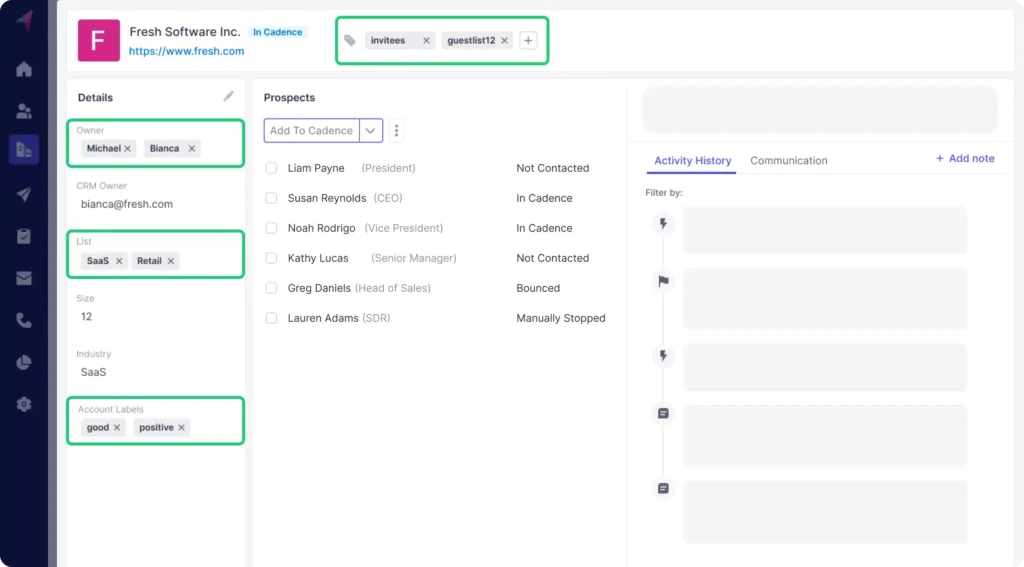
1) Map Prospects to Accounts: Klenty automatically groups your prospects into accounts based on their companies. It auto-detects the prospect’s company field or the email address to do so. You can access the details of different stakeholders within an organization in a single view.
2) Assign Owner: Keep sales reps focused on their own accounts by assigning an owner to different accounts. This will also reduce confusion on who should pick which account and the chance of a prospect getting added to different cadences.
3) Account List/Tag: Customize accounts based on labels or tags — this could include your prospects’ engagement levels or your messaging strategy. You can even organize accounts based on account-specific fields for a better view.
Step 2: Execute Personalized Sales Sequences for Different Stakeholders
The key aspect of Account-based Selling is to reach out to different prospects within a company with different personalized messaging that is relevant to each prospect. Klenty lets sales reps design sequences that can be personalized with relevant messaging for different stakeholders.
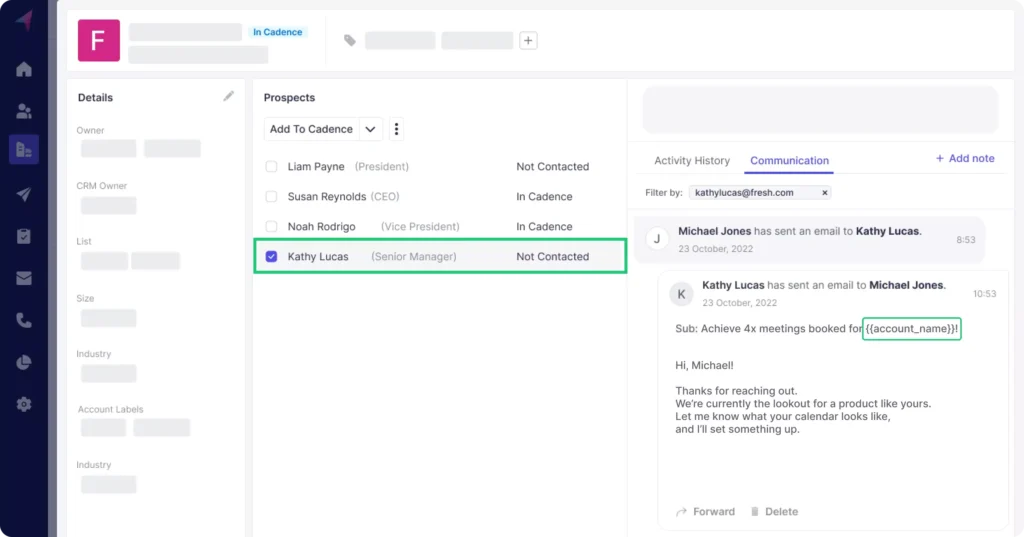
4) Cadences: Design sequence steps tailored to individual personas using Klenty’s cadences. A multi-channel approach is key - build sequences with touchpoints that include emails, calls, texts, and LinkedIn to find which combination best engages each personal.
5) Personalization: Klenty enables you to use account-level personalization. You can use the account name and individual prospect titles to design a more targeted outreach campaign. Employ Klenty’s image and video personalization to add that extra layer of personal touch - by including personalized product demos or logos within your messages.
6) Templates: Klenty allows you to save all your email templates in the template library. Keep winning templates at your fingertips to replicate across multiple accounts in the future.
7) Intent Signals: Klenty’s Intent Detector helps you determine your prospect’s engagement levels — meaning, you can gauge who is more interested in your outreach. So, you can prioritize highly-engaged prospects within accounts — this person could be the one to champion you till the end.
Step 3: Measure the Performance
Sales teams need to analyze the top-performing accounts and find insights into what is working for those accounts. Klenty provides features that can help teams determine the factors for success and replicate the same across other accounts to close deals faster.
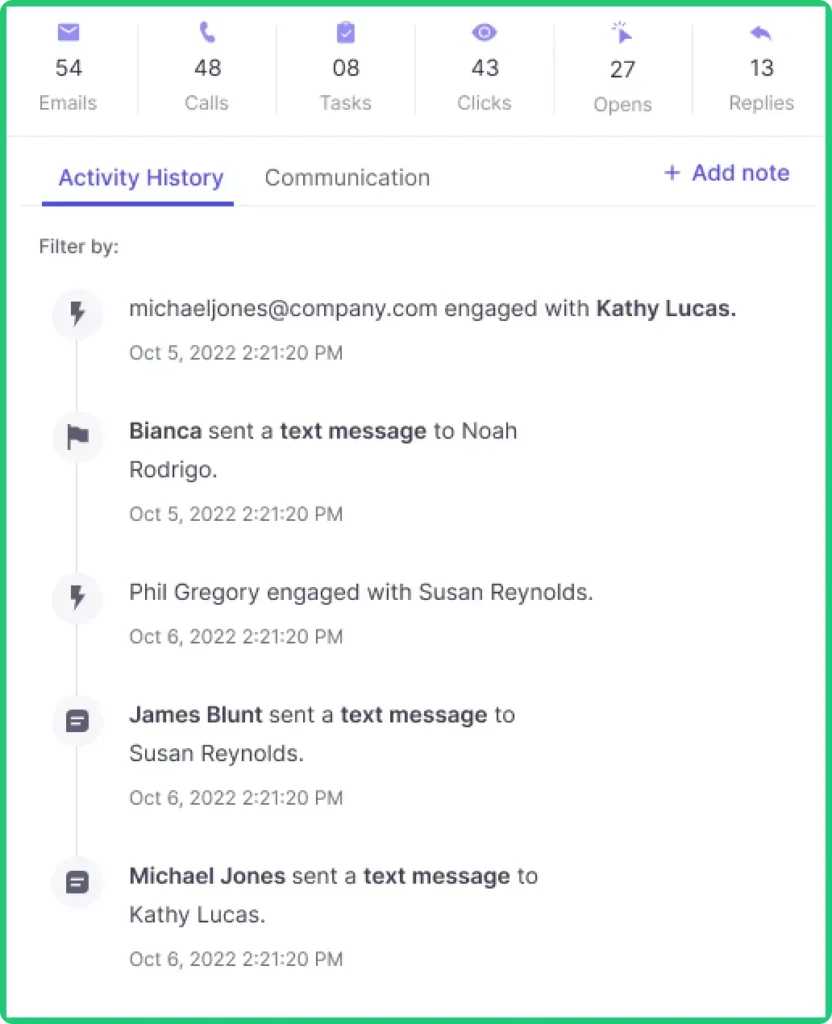
8) Account Activity History: Klenty offers a bird’s-eye view of account activity. Gaining insights into the account status is the best way to know how your accounts are performing. Klenty shows you the overall status of an account, so you can analyze top-performing accounts and replicate winning strategies across different accounts. Also, you can act hard and fast when an account underperforms.
9) Account Analytics Panel: Klenty also provides quick insights into account performance, numbers-wise. You can get an overall idea of the number of emails sent, calls made, tasks completed, and so on.
Conclusion
Winning deals demands sales teams to focus on building relationships with the entire company instead of a single individual. To achieve this, the way to play the game is by adopting an Account-based Selling Strategy.
Klenty has built everything that allows sales teams to execute the Account-based Selling strategy easily. Sales teams will be able to focus on the target accounts and engage deeply on a personal level with all the stakeholders involved to build lasting relationships.
Log in to Klenty and start executing your Account-based Selling strategy now!
